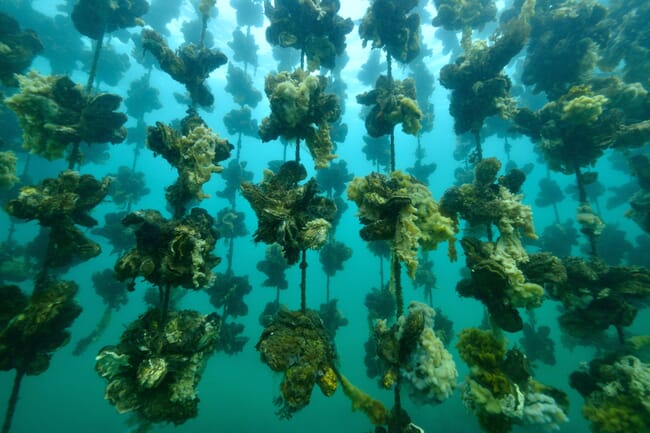
These species rely on minerals like calcium carbonate as building blocks for shells and skeletons. Economic sectors that depend on the ocean – like fisheries, aquaculture and tourism – are also impacted, as a result.
The new data product, which has recently been featured in the Journal of Advances in Modeling Earth Systems, combines observational data with computer simulations and will provide improved global and regional projections for ocean change.
The NOAA scientists used models of the changing ocean to determine how chemistry, biology, and physical forces could work together in a changing ocean and to provide projections for 10 different indicators of ocean acidification. They used existing "shared socioeconomic pathways" (SSPs) previously developed by the World Climate Research Programme for the Intergovernmental Panel on Climate Change Sixth Assessment Report, AR6.
“These regional and global projections and maps enable communities across the world to develop more informed adaptation and mitigation strategies,” said the lead author of the study, Li-Qing Jiang, at NOAA's National Centers for Environmental Information and the Earth System Science Center at University of Maryland.
The impact of ocean acidification
Ocean acidification occurs when the ocean absorbs carbon dioxide, a greenhouse gas emitted by cement production, deforestation and the burning of fossil fuels. When there’s an excess of CO2, it can cause a fundamental change in the chemistry of the ocean, creating an increased acidity that can impact the growth, behaviour, and survival of some marine species – especially clams, oysters and corals.
Under the business-as-usual climate scenario (SSP5-8.5), for example, surface ocean acidity is projected to increase by around 150 percent between 2010 and 2100. The tool shows that by 2100, many regions of the ocean are expected to be low in the minerals needed for building strong shells and skeletons.
In contrast, under the low-emission and high-mitigation scenario (SSP1-1.9), surface ocean acidity is expected to increase by only 4 percent, and most of the surface ocean will remain supersaturated. Waters supersaturated with calcium carbonate make it easier for marine life to build and maintain shells and skeletons.
Many coastal communities in the US have already felt the effects of ocean acidification, as both wild shellfish and the aquaculture industries have been impacted. Coral reef ecosystems, which face several stressors including warming, pollution and ocean acidification, are important culturally and support tourism, recreation and fisheries around the world.
“This is a landmark paper – we’ve not been able to combine an ensemble of Earth Systems Models and observations together in the same way before. It represents a great advancement in global projections,” said Rik Wanninkhof, a senior scientist with NOAA’s Atlantic Oceanographic and Meteorological Laboratory and an author of the study.
The new data product is available for public use through the National Oceanic and Atmospheric Administration (NOAA) National Centers for Environmental Information, and global maps of the ocean acidification indicators are available at NOAA’s Ocean Carbon Acidification Data System.



